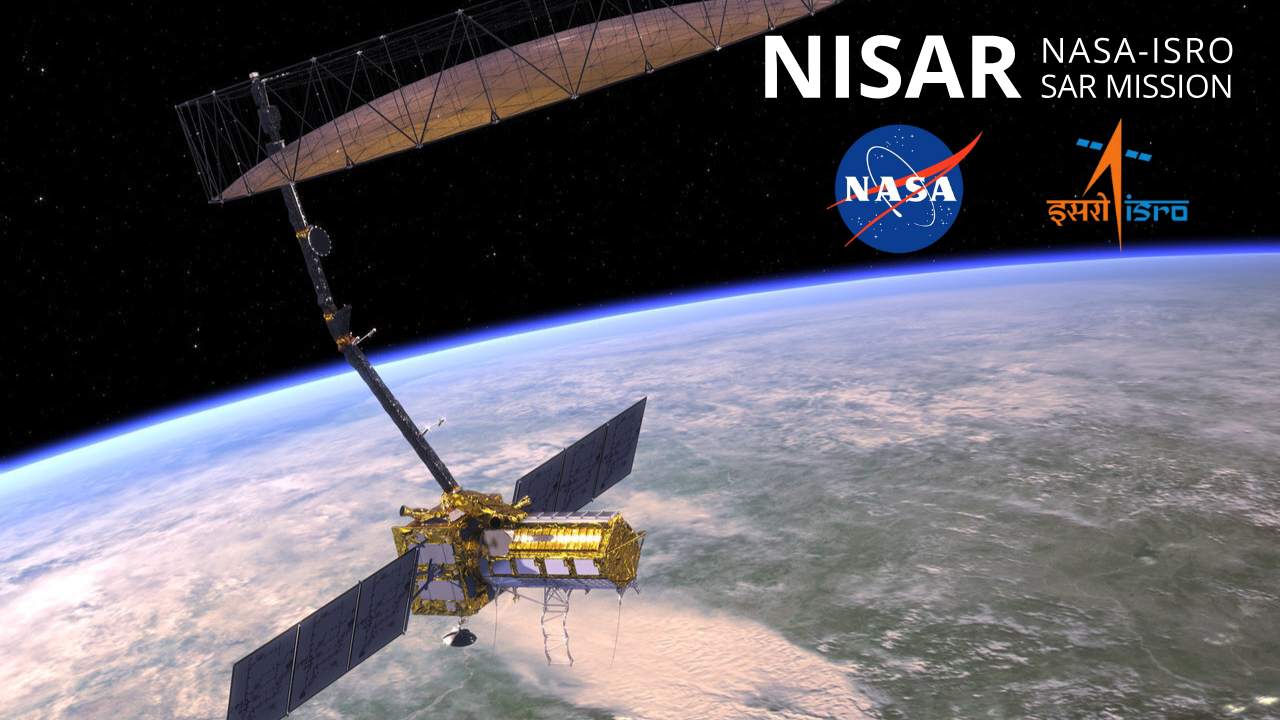India’s GSLV-F16 to Launch NISAR, Marking NASA–ISRO Collaboration on Advanced Earth Radar Imaging

Mumbai, July 29, 2025 — The NASA–ISRO Synthetic Aperture Radar (NISAR) satellite is scheduled for launch on July 30, 2025, at 17:40 IST, aboard ISRO’s GSLV‑F16 from Sriharikota’s Second Launch Pad. This marks a landmark Indo‑US collaboration in advanced Earth observation and reinforces India’s growing space capabilities from its premier launch site at Sriharikota.
Mission Overview
-
Satellite: NISAR (approx. 2,392 kg), employing dual-frequency L-band (NASA) and S-band (ISRO) synthetic aperture radars with full polarimetric and interferometric capability.
-
Launch Vehicle: GSLV‑F16 (Mk II, 18th GSLV mission, 12th with indigenous cryogenic stage), three-stage configuration with a 4 m ogive fairing.
-
Orbit: Sun synchronous orbit (inclination ~98.4°) at ~743 km altitude.
-
Payload Features: 12 m deployable mesh antenna using the SweepSAR technique, providing high-resolution, wide-swath imagery every 12 days, day/night, and all-weather.
Scientific Objectives and Capabilities
NISAR will systematically image Earth's land and ice surfaces to support:
-
Ecosystem monitoring (woody biomass, wetlands, crop dynamics)
-
Cryosphere tracking (glacial and ice-sheet changes)
-
Terrain deformation mapping (e.g., seismicity, subsidence, landslides)
-
Hydrology and coastal monitoring (soil moisture, shoreline changes, sea-ice, ship detection)
It enables centimeter-level precision over global land and ice areas every 12 days, with pixel resolution of 5–10 m.
Collaboration and Timeline
-
Over a decade of technical collaboration: NASA provided the L-band radar, antenna, recorder, and GPS; ISRO contributed the S-band radar, spacecraft bus, data handling, and GSLV‑F16 launcher.
-
Launch support: The GSLV GS2 second stage was flagged off to Sriharikota in April 2025, indicating the commencement of the integrated launch campaign.
-
Commissioning (In-Orbit Checkout): Scheduled for approx. 90 days post-launch, including calibration and systems testing; full science mode expected from November 2025.
Key Mission Milestones
-
July 30, 2025: Launch of NISAR aboard GSLV‑F16 from Sriharikota.
-
August to October 2025: Commissioning and in-orbit checkout phase, involving system calibration and performance validation.
-
November 2025 onward: Commencement of full science operations and public data release.
Data Access & Open-Access Policy
-
All NISAR data will be freely available within 1–2 days of acquisition via NASA and India’s National Remote Sensing Centre (NRSC) portals.
-
Near real-time access will be granted during emergency events, enabling stakeholders globally to leverage data rapidly.
Strategic and Economic Implications for India
Advancement of India’s Space Sector
NISAR affirms India’s leadership in radar-based Earth observation and reinforces Atmanirbhar Bharat and Digital India initiatives. The mission is expected to catalyze growth in commercial remote sensing, geospatial analytics, and climate-tech startups under NSIL and the private aerospace sector.
Impact Across Sectors
-
Agritech & Crop Insurance: Enables data-driven crop yield prediction, drought/flood impact analysis, and parametric insurance calibration.
-
Infrastructure & Urban Planning: Continuous subsidence and structural monitoring of dams, metro lines, and transport networks.
-
Environmental Policy & Water Management: Provides data for policy-making on groundwater, coastal erosion, and climate adaptation.
Global Significance and Future Outlook
NISAR positions India among a small number of nations with operational dual-band SAR satellite capabilities. Its datasets are expected to support international bodies such as the UN, IPCC, and World Bank for climate change modeling, disaster resilience planning, and sustainable development. Its transparent open-data policy fosters global research collaboration and scientific diplomacy.



 146
146

 The BharatBiz
The BharatBiz
 16
16

